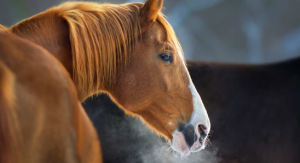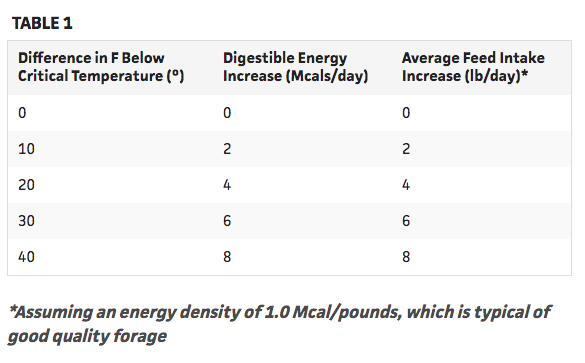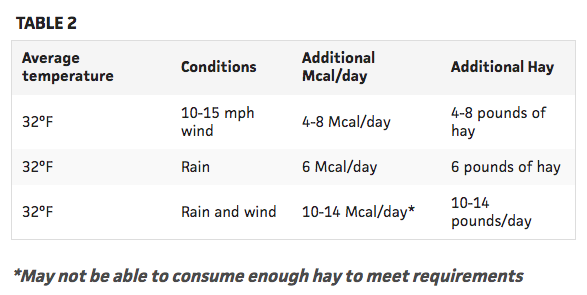 In the next couple of months, understanding “Lower Critical Temperature (LCT)” will be important for caring and feeding your horse(s) properly. LCT is the temperature below which metabolic heat production must be increased to maintain body temperature.
In the next couple of months, understanding “Lower Critical Temperature (LCT)” will be important for caring and feeding your horse(s) properly. LCT is the temperature below which metabolic heat production must be increased to maintain body temperature.
For mature horses, their LCT will fall around 5°F for a horse with a thick coat and 41°F for a horse with a thin coat. Senior horses over 20 years old, often have a thinner coat and will fall into a LCT of around 41°F. LCT for young horses ranges between 12°F for those with thicker coats and 32°F for thinner coats.
How to Feed as the Temperature Drops
Forage is an essential part of every horse’s diet, whether an 18 hand Belgian or 13 hand welsh pony. Equine digestive systems are designed to digest forage. As temperature drops in the colder months, not only do we need our normal supply of forage stocked in our barns, but we need to be prepared to feed more hay, should the winter conditions prove to unforgiving this season.
For each decrease in coldness of 1°F below the critical temperature, there is an increase in digestible energy requirements for body temperature maintenance. Table 1 shows the estimated feed energy increase at different magnitudes of cold below the lower critical temperature of mature horses.
For example, a horse with a thin coat and a LCT of 41°F, with no change in temperature (41°F), will have a 0 megacalories (Mcals) increase per day. Therefore 0 pounds of feed intake increase per day. Let’s say the temperature drops 20 degrees, so it is 21°F outside. In this case, your thin coated horse will need to increase their Mcals by 4, which means an increase of 4 pounds of forage per day to maintain body weight.

What Type of Effect Does Rain and Wind Have on Your Horse?
Wind can make a tolerable temperature day feel miserable. Add moisture? Even worse. Table 2 shows, with just 10-15 mph winds at 32°F, that is an increased need of 4-8 Mcals per day. This means 4-8 pounds per day for your horse. Given our previous scenarios with Table 1, that’s close to a 10 degree drop also. So, not only will your horse need 4-8 pounds of additional forage to account for the wind, they’ll also need another almost 2 pounds. This helps keep your horse warm during these cold conditions and ensure body condition maintenance.

Interested in learning more? Visit or call North Fulton Feed & Seed for more information!
Article brought to you by Standlee Forage.
